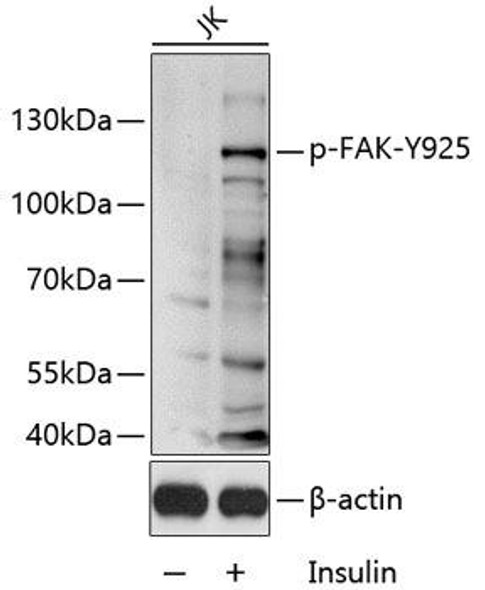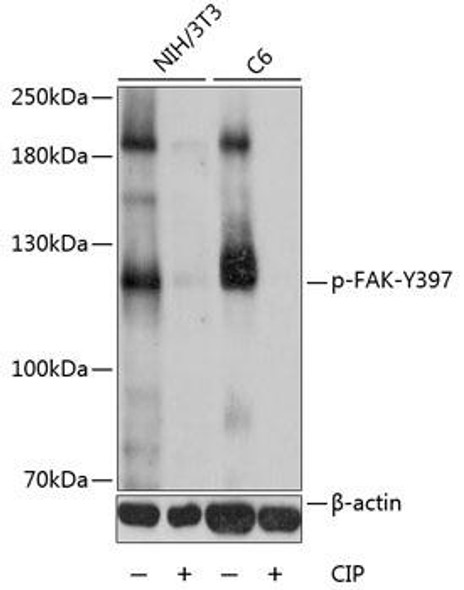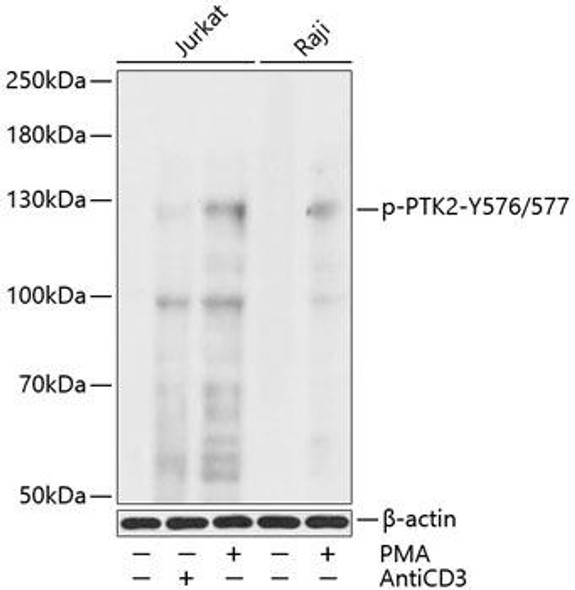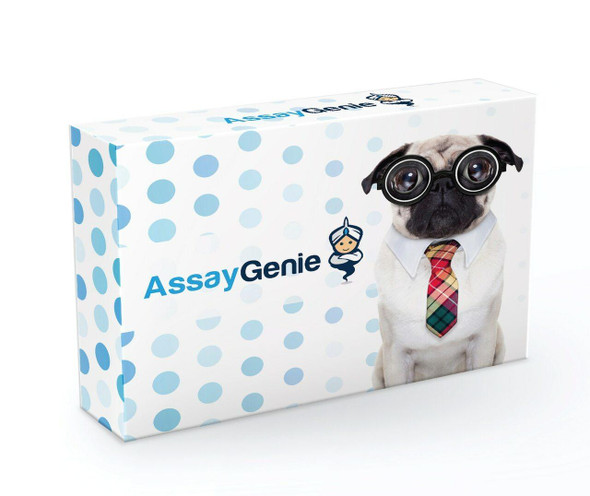Description
| Antibody Name: | PTK2 Antibody (PACO33464) |
| Antibody SKU: | PACO33464 |
| Size: | 50ug |
| Host Species: | Rabbit |
| Tested Applications: | ELISA |
| Recommended Dilutions: | |
| Species Reactivity: | Chicken |
| Immunogen: | Recombinant Chicken Focal adhesion kinase 1 protein (376-683AA) |
| Form: | Liquid |
| Storage Buffer: | Preservative: 0.03% Proclin 300 Constituents: 50% Glycerol, 0.01M PBS, PH 7.4 |
| Purification Method: | >95%, Protein G purified |
| Clonality: | Polyclonal |
| Isotype: | IgG |
| Conjugate: | Non-conjugated |
| Background: | Non-receptor protein-tyrosine kinase that plays an essential role in regulating cell migration, adhesion, spreading, reorganization of the actin cytoskeleton, formation and disassembly of focal adhesions and cell protrusions, cell cycle progression, cell proliferation and apoptosis. Required for early embryonic development, embryonic angiogenesis, normal cardiomyocyte migration and proliferation, and normal heart development. Regulates axon growth and neuronal cell migration, axon branching and synapse formation; required for normal development of the nervous system. Plays a role in osteogenesis and differentiation of osteoblasts. Functions in integrin signal transduction, but also in signaling downstream of numerous growth factor receptors, G-protein coupled receptors (GPCR), ephrin receptors, netrin receptors and LDL receptors. Forms multisubunit signaling complexes with SRC and SRC family members upon activation; this leads to the phosphorylation of additional tyrosine residues, creating binding sites for scaffold proteins, effectors and substrates. Regulates numerous signaling pathways. Promotes activation of phosphatidylinositol 3-kinase and the AKT1 signaling cascade. Promotes activation of MAPK1/ERK2, MAPK3/ERK1 and the MAP kinase signaling cascade. Promotes localized and transient activation of guanine nucleotide exchange factors (GEFs) and GTPase-activating proteins (GAPs), and thereby modulates the activity of Rho family GTPases. Signaling via CAS family members mediates activation of RAC1. Regulates P53/TP53 activity and stability. Phosphorylates SRC; this increases SRC kinase activity. Isoform 2 (FRNK) does not contain a kinase domain and inhibits PTK2/FAK1 phosphorylation and signaling. |
| Synonyms: | Focal adhesion kinase 1 (FADK 1) (EC 2.7.10.2) (Focal adhesion kinase-related nonkinase) (FRNK) (p41/p43FRNK) (Protein-tyrosine kinase 2) (p125FAK) (pp125FAK), PTK2, FAK FAK1 |
| UniProt Protein Function: | FAK: a tyrosine kinase of the FAK family required for cell migration and contact-dependent survival signaling. Activated by tyrosine-phosphorylation in response to either integrin clustering induced by cell adhesion or antibody cross-linking, or via G-protein coupled receptor (GPCR) occupancy by ligands such as bombesin or lysophosphatidic acid, or via LDL receptor occupancy. Downstream of integrins and Src, upstream of Ras/MAPK. Localizes to focal adhesions that form between cells growing in the presence of extracellular matrix constituents. Interacts with CAS family members and with GIT1, SORBS1 and BCAR3. Interacts with Shb. Required for full Ras transformation of fibroblasts. Increased expression in breast and other cancers, related to chromosome 8q amplification. Overexpression and activation associated with increased migration, invasion and progression of ovarian cancer, and with progression in hepatocellular carcinoma, thyroid cancer, and acute myelogenous leukemia. siRNA increases chemosensitivity of pancreatic adenocarcinoma xenografts. Inhibitor: ISI15421 (antisense). Four splice-variant isoforms have been observed.Protein type: Kinase, protein; Protein kinase, TK; Protein kinase, tyrosine (non-receptor); EC 2.7.10.2; TK group; Fak familyCellular Component: extrinsic to internal side of plasma membrane; focal adhesion; perinuclear region of cytoplasm; microtubule organizing center; nucleusMolecular Function: identical protein binding; protein binding; signal transducer activity; protein-tyrosine kinase activity; non-membrane spanning protein tyrosine kinase activity; ATP binding; receptor bindingBiological Process: epidermal growth factor receptor signaling pathway; regulation of cell adhesion; cell migration; peptidyl-tyrosine phosphorylation; signal complex assembly; innate immune response; cytoskeleton organization and biogenesis; angiogenesis; cell differentiation; regulation of cell proliferation; negative regulation of apoptosis |
| UniProt Protein Details: | |
| NCBI Summary: | |
| UniProt Code: | Q00944 |
| NCBI GenInfo Identifier: | 45382167 |
| NCBI Gene ID: | 396416 |
| NCBI Accession: | NP_990766.1 |
| UniProt Secondary Accession: | Q00944,L13616 |
| UniProt Related Accession: | Q00944 |
| Molecular Weight: | 119,207 Da |
| NCBI Full Name: | focal adhesion kinase 1 |
| NCBI Synonym Full Names: | protein tyrosine kinase 2 |
| NCBI Official Symbol: | PTK2 |
| NCBI Official Synonym Symbols: | FAK; FRNK; p125FAK |
| NCBI Protein Information: | focal adhesion kinase 1; FADK 1; pp125FAK; p41/p43FRNK; protein-tyrosine kinase 2; PTK2 protein tyrosine kinase 2; focal adhesion kinase-related nonkinase |
| UniProt Protein Name: | Focal adhesion kinase 1 |
| UniProt Synonym Protein Names: | Focal adhesion kinase-related nonkinase; FRNK; p41/p43FRNK; Protein-tyrosine kinase 2; p125FAK; pp125FAK |
| Protein Family: | |
| UniProt Gene Name: | PTK2 |
| UniProt Entry Name: | FAK1_CHICK |






